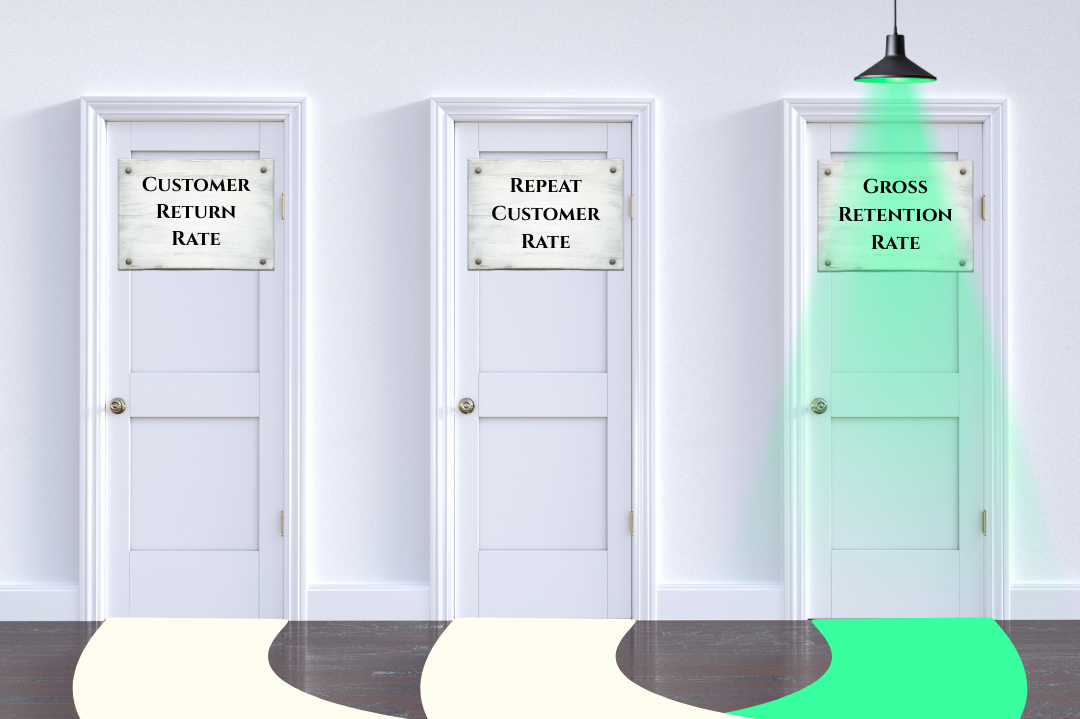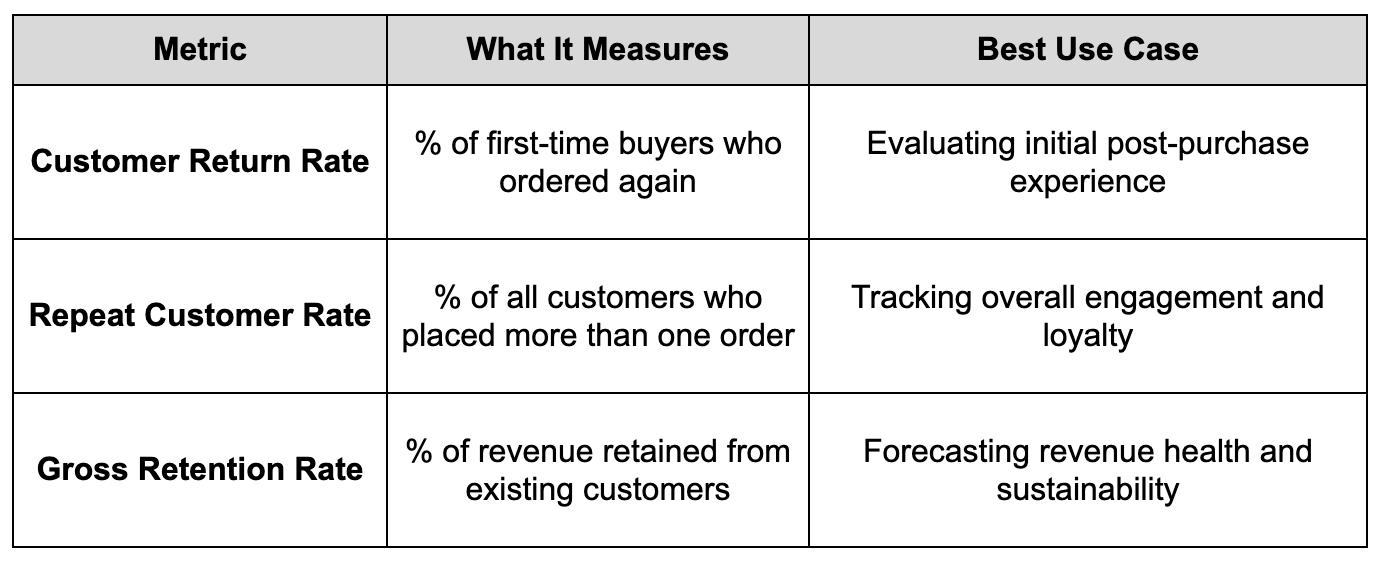August 7, 2025

If you run an e-commerce or direct-to-consumer (DTC) brand, measuring customer retention isn’t optional; it's the difference between predictable growth and constant firefighting. But not all retention metrics reveal the same insights. Some measure basic repeat purchase behavior, while others dig deeper into revenue stability and long-term loyalty.
Are you tracking the right metrics?
Let’s dive into the differences between Customer Return Rate, Repeat Customer Rate, and Gross Retention Rate, and why only one truly shows whether your retention strategy is working.
Customer Return Rate is a simple retention metric that tells you the percentage of first-time buyers who place a second order.

Example:
Limitations:
Customer Return Rate doesn’t show how often customers return after their second purchase or how much they spend over time.
Repeat Customer Rate measures the percentage of all customers in a period who placed more than one order. It goes beyond just first-time buyers.

Example:
Limitations:
This metric still doesn’t account for how much revenue each customer contributes.
Gross Retention Rate (GRR) measures how much revenue you retained from existing customers, excluding any new sales or upsells.
This is the metric that tells the whole story not just whether people returned, but whether they continued spending at the same level.

Example:
Why It Matters Most:
Unlike Customer Return Rate or Repeat Customer Rate, GRR captures the financial health of your existing customer base. It shows whether you’re building sustainable growth or relying on constant acquisition to replace lost revenue.
If you only track whether people came back, you miss the big picture:
Gross Retention Rate is the clearest indicator of loyalty and profitability because it reflects actual dollars retained. For DTC brands that rely on repeat purchases, subscriptions, or replenishment cycles, GRR should be your north star. Because it excludes new sales and upsells, it isolates the impact of churn and customer loyalty.

Customer Return Rate and Repeat Customer Rate can give you a snapshot of buyer behavior, but only Gross Retention Rate tells you if your revenue foundation is solid.
At Cohora, we help brands improve all three metrics so you can build lasting relationships, reduce churn, and unlock predictable growth.
Ready to see how much more your customers could be worth?


.png)


